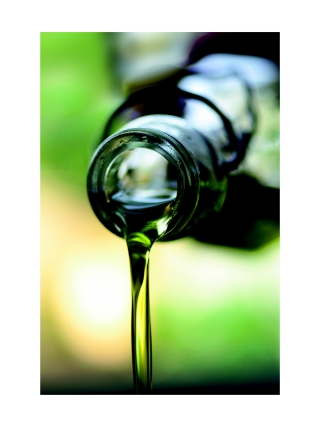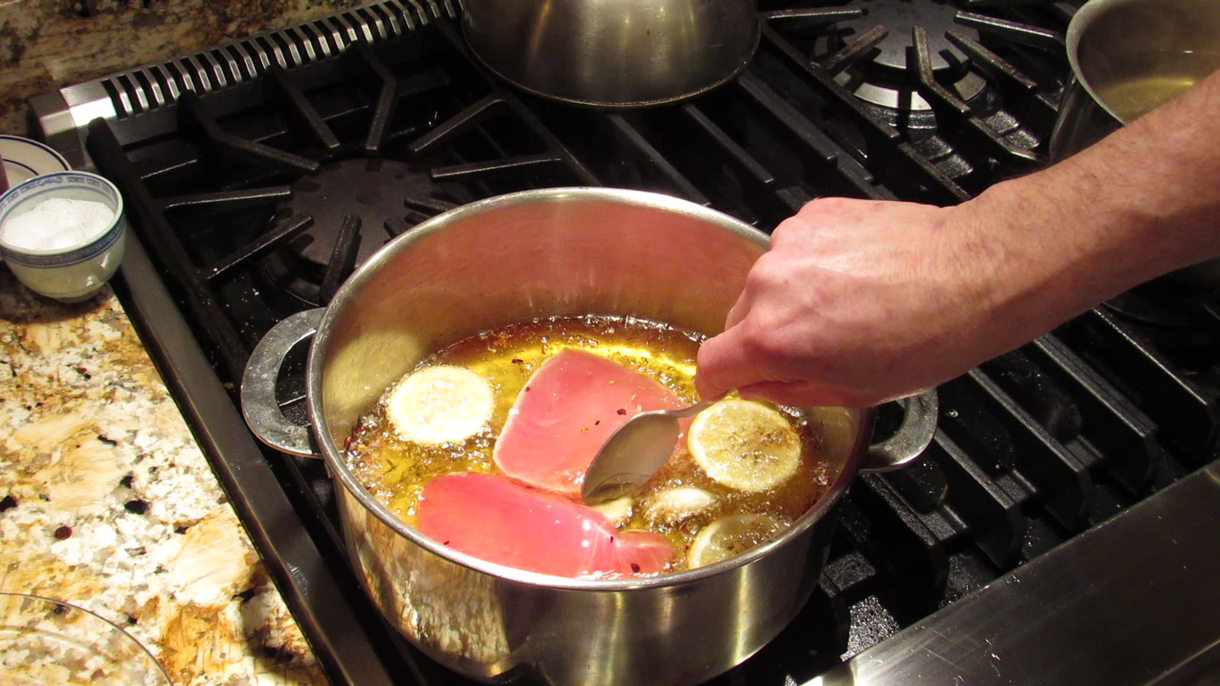
Getting the Most Out of Oils. Hint: It’s All About Heat.
28 March 2022Cold-pressed oils are healthy and flavorful tools utilized in cooking from poaching to a finishing drizzle.
By Lisa Parrish, GMC Editor
Feedback & comments: This email address is being protected from spambots. You need JavaScript enabled to view it.
Not all oils are created equal and that is especially true when considering the differences between cold-pressed and refined oils. Ask culinary students about the benefits of cold pressing and they might begin describing cold brew coffee. And that answer may be partially correct as both extraction processes do not use heat.
Teaching students when and how to use oil and which oil to select is a foundational cornerstone of cooking and baking. Take a tour of various oils and how they are made, learn about their nutritional content and discover what oil is best for what application.
A lesson on unrefined oil
What is the difference between unrefined and cold-pressed oil? If you answered not a thing, you are correct.
Unrefined and cold-pressed oils are created by extracting oil without using heat or chemicals where the temperature is below 122 degrees F. Extra Virgin Olive Oil (EVOO) is the most recognizable cold-pressed oil. Olives are crushed into a paste and the oil is forced out through pressure. Canola, sunflower, coconut, peanut and grapeseed oils can also be unrefined. The benefits of this natural extraction process include oils that are more flavorful, nutritious and delicate than their refined counterparts. Using EVOO as an example, it is usually a darker green color with pronounced grassy and peppery flavors. It also has a fruity aroma and is higher in antioxidants. The reason it’s not used for more applications is that it costs more to purchase and will burn above 160 degrees.
Refined oils are made from a process that involves heat and chemical solvents or filters such as charcoal to extract the oils. During manufacturing, the color, odor, viscosity and bitterness are refined to a consistent point. Canola, corn and vegetable oils are examples of refined oils. Even though they are less nutritious than their unrefined counterparts, their burn point is much higher, depending on the oil.
Positive health aspects of cold-pressed oils
The health benefits of unrefined oils such as avocado oil come from their healthy fats and high antioxidant content. Bitter almond oil is excellent for cooking and is known to contain antibacterial, antiviral, anti-fungal, anti-spasmodic, anti-inflammatory and anti-itch properties. Plant-based oils are lower in unsaturated fat making them a healthier oil to consume. And, studies have proven that sesame oil can help in the management of blood glucose levels and also helps in controlling high blood pressure.
Pairing oils and applications
Catania Oils Chef and Regional Sales Manager Peter Hyde suggests pairing these oils and applications:
- Unrefined oils are best for baking
- Salad dressings (only unrefined) – almond, avocado, coconut, grapeseed, hemp, olive, walnut, canola and soybean
- Finishing oil (only unrefined) – almond, walnut, pistachio, coconut, avocado and olive oil
- Sautéing – olive, soybean, canola and sunflower
- Stir fry/frying – avocado, corn, peanut, palm, safflower, sunflower, soybean and cotton
- Roasting – any of the oils used in sauté or salad dressings
- Grilling – avocado, corn, peanut, palm, safflower, sunflower, soybean and cotton
Chef Hyde suggests using unrefined, plant-based oils for infusing flavors such as basil, garlic and chili peppers because these oils absorb the flavors more readily and can be stored at room temperature or refrigerated without congealing. Flavored oils pair particularly well with finishing and salad dressings oils.
 Innovative application with unrefined EVOO
Innovative application with unrefined EVOO
Chef Hyde describes how he uses EVOO to poach fish, chicken, veal and artichokes.
“This is a very special method because traditionally chefs use EVOO in cold applications and would never think of using it in a hot application because it has a low smoke point. EVOO has been extracted from the olive in its natural form and contains all its natural flavoring and color. Unfortunately, this means the oil will burn at high temperatures and cannot hold up to the rigors of high-heat applications such as sautéing, deep frying and pan frying.
“Poaching with EVOO requires the temperature to be kept under 160 degrees F. Once the temperature is reached in a saucepan I add a fresh bay leaf, thyme, black peppercorns and yellowfin tuna. I will poach it for six minutes and then turn off the heat and let the tuna steep in the oil. The tuna and oil can be put in the refrigerator when cool and used the next day or remove the tuna from the oil and serve warm. Besides fish, I have poached chicken, veal and artichokes.
“The advantage to poaching with EVOO is that it will impart all the flavors of the olive oil into the protein that you choose to cook. These flavors vary but typically include stone fruit, herbaceous, grassy, peppery, vanilla, and citrus notes. Once the oil is used for poaching, it can be refrigerated and used to either poach another protein or recycled to make a salad dressing or finishing oil.”
Chef Hyde suggests other unrefined oils appropriate for poaching include avocado, sesame, almond, hempseed, flaxseed and walnut. “For example, if a chef uses coconut oil, it will impart a tropical creamy finish and is one of the medium-chain triglycerides (meaning they are metabolized differently than the long-chain triglycerides) which offers additional health benefits,” he said.
Olive oil resources
Click here for a resource guide on the various types of olive oil, whether they are pressed or refined, heat tolerances and flavor notes.
Click here for a previous Gold Medal Classroom that further discusses cooking with olive oil detailing storage methods and various smoke points.
Photos courtesy of Cantina Oils.
